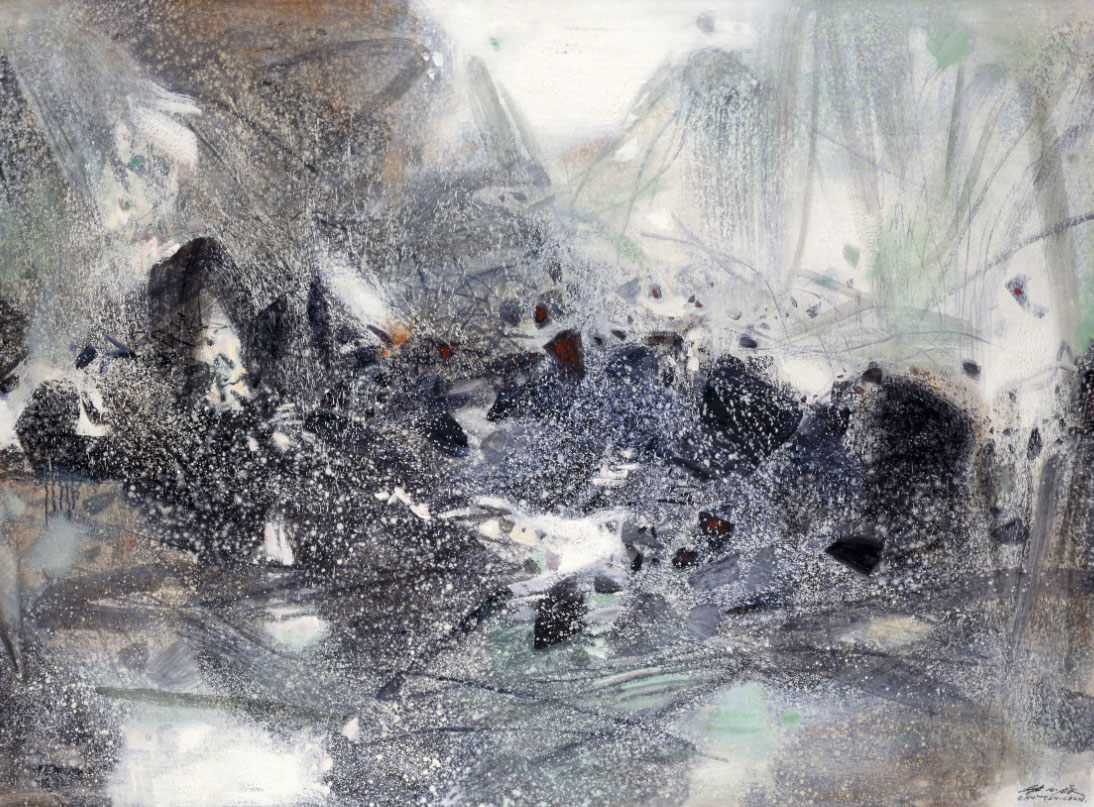Nature Hivernale
One Artwork, One Story.
In general, the worlds in Chu’s paintings reject all figuration, all identifiable objects that would freeze vision and meaning. Snow, for example, is a static subject, an inert color in some of his paintings from 1965, when the artist had just flown over the Mont Blanc and the Pic du Midi. In January 1985, he witnessed a snowstorm in Switzerland, which plunge the surrounding mountains, already covered in white crystals, into a blizzard.
As an atmospheric precipitation, which triggered the series of “Snow” paintings, this snow is now airy, semi-solid, almost gaseous in nature.
It acts as an optical filter, intermittently and dynamically masking the denser background. It thus offers the eye a multitude of identical elements that escape all visual grasp, awakening in Chu memories of the optical principle of juxtaposed, vibrant dots of color in the neo-Impressionism of Seurat or Signac. But there’s a big difference: Chu’s paintings have rarely seen their palette so restricted to values and shades of white and grey. The blizzard, for all its violence, has produced some of Chu’s most serene paintings.
Matthieu Poirier, monograph Chu Teh-Chun – In Nébula, Les éditions Gallimard, 2024
Image : Nature hivernale A – oil on canvas – 1985 © ADAGP Paris 2025 / Fondation CHU Teh-Chun

